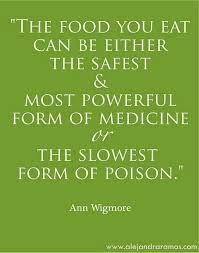 Glycemic Index is a highly searched term on google nowadays so – chances are – you’ve already heard something about it. Go back five or ten years and most people wouldn’t have a clue what GI foods were or why they mattered.
Glycemic Index is a highly searched term on google nowadays so – chances are – you’ve already heard something about it. Go back five or ten years and most people wouldn’t have a clue what GI foods were or why they mattered.
Nowadays we are better informed and many of us are concerned about weight gain and controlling blood sugars as we get older.
We know that high blood sugar levels and blood sugar spikes are bad and that we should aim for normal even levels throughout the day.
Glycemic Index explained
The glycemic index (GI) is a ranking of carbohydrates on a scale from 0 to 100 according to how much they raise blood sugar levels after eating.
Foods with a high GI are said to have a high glycemic load and are rapidly digested and absorbed resulting in marked fluctuations in blood sugar levels. In other words they tend to make your blood sugar levels spike upwards suddenly and then crash downwards very shortly afterwards.
Foods with a low-GI are said to have a low glycemic load. Low GI foods are slowly digested and absorbed, producing a gradual rise in blood sugar and insulin levels. Instead of the sugar spike and crash – your blood sugars are kept at a consistent level throughout the day.
From a health, fitness and looks point of view – low GI food is good and too much high GI food is bad.
You may have heard that there are good carbs and bad carbs and that you need to eat more of the good sort. That very broad advice stems from research completed in the last 10-15 years on the glycemic load of foods.
Not just another food fad
You may worry that this is just another food or health fad – not a bit of it. This stuff is backed up by some very serious research. In 1999 the World Health Organisation (WHO) and Food and Agriculture Organisation (FAO) recommended that people in industrialised should base their diets on low GI foods in order to prevent heart disease, diabetes and obesity.
Studies from Harvard School of Public Health show that the risks of diseases such as type 2 diabetes and coronary heart disease are strongly related to the GI level of a person’s diet.
How low GI foods help you lose weight
Low GI foods help you lose weight by delaying the release of sugar – or energy – into the bloodstream. So foods with a low glycemic load keep us feeling more satisfied after meals for longer lowering the likelihood of snacking.
So – apart from preventing life threatening diseases – low GI foods can also have an extremely positive impact on your weight. In an Australian study published in July 2006 a low GI diet was linked to increased weight loss of five percent or more compared to a diet based on foods with a high GI load.
Foods that have a high GI value may give you a sudden energy bursts but leave you feeling hungry again after a short period of time. You may have noticed this yourself if you snack on foods like doughnuts, candies, cookies or chocolate during the day – you get an immediate burst of energy but very soon after you may get the crash – low energy, irritability and even headaches.
It is this see saw pattern of energy release that is so bad for your health and looks leading to weight gain and possibly to type 2 diabetes in the worst case scenario.
Simple versus complex carbs
Nowadays – nutritionists tend to talk in terms of simple carbohydrates or sugars (high GI) and complex carbohydrates (low GI).
White refined sugar and high fructose corn syrup (HFCS) are two examples of simple sugars in a lot of processed foods and soda drinks. High fructose corn syrup is used by the food industry extensively because it extends the shelf life of products compared to other sugars, is much sweeter and cheaper than sucrose.
This hidden sugar in your food may cost you dear and it is something you need to guard agains for anti aging health.
Eat your sugar with fiber
Generally, you should keep your intake of added sugar to around 40 grams daily (7-8 teaspoons of sugar) for weight control and health. No problem you may say but did you know that the average can of coke contains around 45 grams equivalent to around 8 teaspoons of sugar.
If that’s a bit of a shocker you might want to look at some other food labels (sweet and savoury) to see the amounts of sugar hidden away in the ingredients list.
So watch what you eat for healthy aging. Make it a golden rule to eat your sugar with fiber – nature does that for you without trying in the form of fruits and vegetables full of natural sugars and fiber in one delicious bundle. Pack your diet with fruit and vegetables and eat dried fruit too – usually low GI and mixed with nuts is a great snack at any time.
Always include more complex carbohydrates in your diet at each meal or as a snack. Instead of highly processed sugar filled breakfast cereals – try natural muesli, granola or porridge.
Stay away from processed white bread and go for whole grains like spelt, rye, pumpernickel or made with seeds and nuts in a delicious granary bake. Make sure the bread you eat doesn’t contain added sugar – many supermarket brands do.
Watch your glycemic load
There are lots of websites with detailed lists of foods and diets that help lower blood sugars and there are many giving the GI index of common foods. Just try googling any of the terms in this article.
You can also buy handy little pocket books with GI values of food to stick in your purse when you go to the supermarket or when you do your shopping list. Remember – what matters is the balance of the total meal – aim to choose low GI foods but including one high GI food in a balanced meal is fine.
So watching your glycemic load and keeping your blood sugar under control is becoming much easier than you might think!






Speak Your Mind